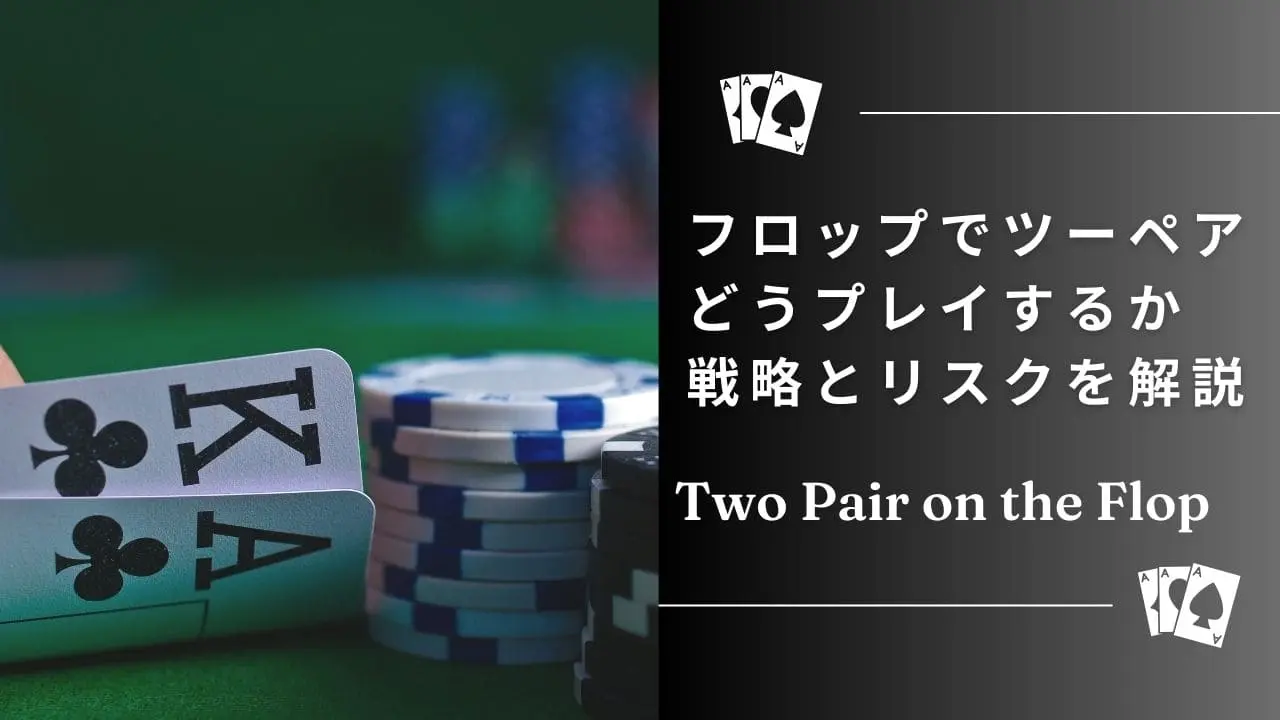Hitting two pair on the flop can be an exciting moment in a poker game. While it’s a strong hand, it also comes with significant risk if not played correctly. In this article, we’ll break down the essential strategies for playing two pair on the flop and provide practical tips to help you maximize value and protect your stack.
Understanding Key Poker Terms
Before diving into strategy, let’s review some key poker terms used throughout this article.
What is the Flop?
The flop refers to the first three community cards dealt face-up on the board. These cards can be combined with your hole cards to form the best possible five-card hand. The flop often determines the direction of the hand and is a key point for strategic decisions.
What is Two Pair?
Two pair means holding two distinct pairs, such as A♠ A♥ and 10♣ 10♦. It’s a strong hand, but vulnerable to stronger holdings like sets, straights, and flushes, so caution is necessary.
Betting and Position Basics
- Betting involves placing chips into the pot. It can be used to apply pressure or extract information from opponents.
- Position refers to your seat at the table relative to the dealer. Later positions (like the Button or Cutoff) are advantageous as you act after seeing others’ actions.
Fundamentals of Two Pair

Strength and Risk of Two Pair
Two pair is often a top hand on the flop, but it’s not invincible. For example, on a flop like A♠ – X♥ – X♣, holding A♦ – X♦ could be strong, but your opponent might have 10♣ – 10♥ for a set. Always assess the board texture and consider opponents’ possible holdings.
Key Strategy Overview
The key to playing two pair is to build the pot when ahead while being cautious on dangerous boards. For instance, avoid overcommitting on a flop with three suited cards, which might signal a completed flush.
Post-Flop Strategy
Using Continuation Bets (C-Bets)
When you flop two pair after raising preflop, continuation betting can help isolate weaker hands. For example, if you hold K♣ – 7♣ on a K♥ – 7♦ – 5♣ flop, a strong c-bet might force out opponents with drawing hands.
Reading Opponents’ Reactions
Pay close attention to betting patterns. A check-call could indicate a draw or a weak made hand, while a raise might signal a set or strong hand. Use this information to guide your decisions on future streets.
Betting and Position Importance
Choosing the Right Bet Size
Selecting the proper bet size is key to extracting value. If the pot is 2,000 chips, betting 1,000–1,500 chips can encourage opponents to chase draws while maximizing profit. Avoid overbetting unless you’re sure your opponent will call.
How Position Impacts Strategy
Acting from late position, such as the Button, gives you more information and flexibility. In early position (e.g., UTG), be more cautious with your sizing since you have limited information about the other players’ hands.
Risk Management with Two Pair
Reading the Board for Danger Signs
Be wary of connected or suited boards that could lead to straights or flushes. For example, a flop like 8♣ – 8♦ – 10♣ could be dangerous due to possible draws. Proceed with caution and adjust your aggression accordingly.
Responding to Stronger Hands
If there’s a chance your opponent has a set or a made straight/flush, consider checking or calling instead of betting aggressively. On later streets, like when a turn card completes potential draws, re-evaluate the strength of your hand carefully.
Advanced Tips for Playing Two Pair
Tips to Boost Your Win Rate
- Bet for value on the flop when you hit two pair.
- Monitor opponent behavior to time your raises and calls effectively.
- Be alert to risky board textures and manage your bets accordingly.
Common Mistakes to Avoid
- Don’t overbet without considering your opponent’s likely hand range.
- Avoid ignoring danger signs on the board—play conservatively when needed.
Conclusion
Mastering how to play two pair on the flop is essential for increasing your win rate. By understanding hand strength, using position wisely, managing risk, and adjusting your bets based on board texture, you can turn this powerful hand into consistent profit. Keep learning and practicing to apply these concepts in real games.


